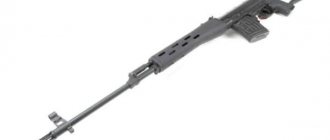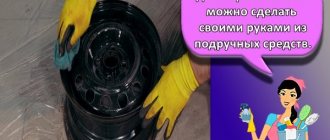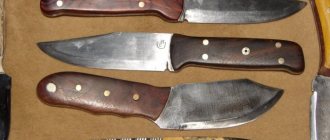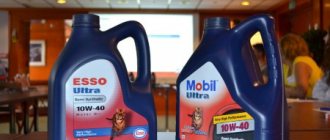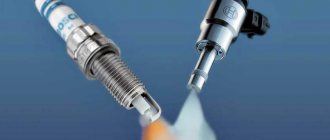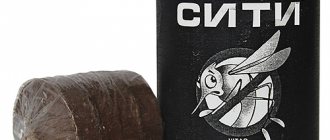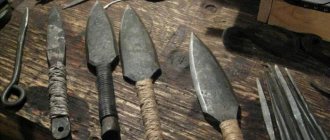What is the composition of winter washer fluid for a car?
Regular operation of the machine in winter requires constant replenishment of a special mixture, which entails significant costs. The second reason that can push a car enthusiast to make his own “anti-freeze” is the unsatisfactory quality of the industrial product. A solution that freezes at low temperatures can cause cracks in the tank and hose, as well as failure of the pump.
Before making a wash at home , it’s a good idea to familiarize yourself with the main ingredients that are used in the factory composition. Structurally, the complex of main components looks like this:
- Surfactants.
- Water.
- Alcohol.
- Flavoring.
The domestic industry uses monohydric alcohol – isopropanol – as an alcohol-containing substance. Products based on it are inexpensive, but have a significant drawback, which is the presence of an extraneous odor. To get rid of it, manufacturers of antifreeze emulsions add flavorings to them, although judging by the reviews of motorists, this is of little use.
The best thermal modifier, which is part of the washer fluid, is considered to be ethyl alcohol, in simple terms – “food alcohol”. However, excise taxes on this product in Russia are so high that manufacturers have abandoned its use. Sometimes you can find “top” ethanol-based mixtures, but the price for a five-liter canister will immediately discourage you from purchasing it.
Another alcohol solution, methanol, is cheap, does not freeze down to -98°C and has no pronounced odor. It is quite widely used in EU countries, but in Russia it has been banned since 2007 due to “certain inclinations of certain segments of the population”, as well as the harmfulness of its fumes.
Thus, it turns out that the choice is not very large. On the one hand, isopropyl mixtures cost 400-700 rubles in dealer stores, and on the other, methanol emulsions cost 50-200 rubles on the highway. In the first case, the integrity of the rubber bands and the solidification threshold are guaranteed, but you have to breathe a specific “lemon” or “pine”. In the second option there will be no smell, since the solution is methanol, however, there are no guarantees. This is why many car owners “open their own production” of winter windshield fluid, and, believe me, there is nothing complicated about this technology. But the benefits are obvious.
Why does windshield washer fluid not freeze in winter?
Attention!!! This method can only be used at an ambient temperature of -10 degrees, otherwise, when used with vinegar in the car interior, there will be a disgusting smell.
To prepare this liquid, you need to mix vinegar and water in equal proportions. For example, to prepare 1 liter of anti-freeze liquid, you need to thoroughly mix 500 ml of vinegar and 500 ml of water.
To prepare 3.75 liters of anti-freeze, you need to take 1/3 of 450 grams. isopropyl alcohol (70%) or 1/4 of 500 gr. above the specified alcohol (90%) and add water to it, bringing the liquid level to 4.5 liters, not forgetting to mix everything thoroughly.
First you need to figure out how this liquid is made, and what is the reason for its stable state in cold weather. If water and fragrances are added to its composition for use in summer, then winter is distinguished by the presence of additional components. Usually, in the production of any anti-freeze, water and alcohol are used, it is the latter that prevents it from freezing at negative temperatures.
You can buy a ready-made anti-freeze or make it yourself
But you should be careful - you cannot take liquids containing methanol, because it is prohibited by law due to the danger of poisoning with toxic fumes. Some unscrupulous manufacturers add this ingredient. This can be determined by the absence of any odor from the antifreeze.
The most optimal anti-freeze component is ethyl alcohol, which is the basis of many wine and vodka products. However, this substance is subject to a high excise tax, as a result of which such a liquid would cost incredible amounts of money. Therefore, it would be much more profitable and easier to use regular vodka mixed with water.
Its fumes can also harm not only the driver, but also the environment.
Most often, isopropyl alcohol is used in the production of washer fluid, which can be found in almost any anti-freeze store. This ingredient is more expensive than the substances described above, however, it does not cause as many harmful fumes. The strong smell of acetone indicates that the antifreeze was made from isopropyl.
Store-bought anti-freeze, in addition to its main components - alcohol and water, may contain ethylene glycol, various surfactants, fragrances and dyes.
The antifreeze composition is indicated on each package
The composition of the antifreeze for cars and the proportions of the components will be as follows:
- From 25 to 75% - this is the percentage of alcohol in anti-freeze products. It is directly dependent on the ambient temperature while the car is moving. At -30 and -35 degrees, its share should reach 75% in order for the anti-freeze to be in a liquid state.
- Water. The absence of impurities in it is a prerequisite. In this form, the manufacturer guarantees the output is a high-quality solution that does not leave streaks or residue after washing. The proportion of its content can vary from 22 to 72%.
- Surfactants added to anti-freeze can be up to 1%, and dyes - 0.001%. The content of other ingredients is 0.5-0.8% in the total amount of this liquid.
Often, drivers purchase the necessary ingredients and prepare a good product themselves. If you know how to mix all the components correctly and in what proportion, then independently producing this product will not be difficult. How to make your own antifreeze at home will be discussed below.
The market is filled with goods from various manufacturers who are not always clean and may sell a low-quality product. Therefore, purchasing anti-freeze liquid in a store does not always seem to be a wise decision. In addition, a poorly made solution can be harmful to health.
Method 1: how to make a winter wash from isopropyl alcohol at home in 5 minutes?
To prepare the emulsion you need to stock up on the following components:
- Isopropyl alcohol.
- Dishwashing detergent (chlorine-free).
- Water.
Important!
Due to the poor quality of tap water, it must be passed through a regular filter. Otherwise, such “delights” as rust, white coating and streaks on the glass are guaranteed. The best option would be to use distilled water.
Before making anti-freeze at home , let's decide on the container in which the ingredients will be mixed - traditionally this is a five-liter canister or a plastic bottle. From this we begin to “dance”:
- pour two liters of water into a container;
- add two liters of isopropyl;
- add one capful of detergent;
- close the lid of the canister and shake the mixture thoroughly.
The above recipe with a 50/50 concentration is quite suitable for cold weather down to -20°C. However, those who wish can prepare the solution specifically for certain weather conditions. In this case, there is a rule - the lower the temperature, the more alcohol needs to be added. Table of percentages to help:
| Alcohol concentration, V% | Alcohol concentration, weight % | Freezing temperature, °C |
| 10 | 8 | -4 |
| 20 | 17 | -7 |
| 30 | 26 | -15 |
| 40 | 34 | -18 |
| 50 | 44 | -21 |
| 60 | 54 | -23 |
| 70 | 65 | -29 |
| 80 | 76 | -37 |
| 90 | 88 | -57 |
| 100 | 100 | -90 |
All that remains is to test the finished product, for which you should pour a little of the mixture into a container and place it in a place with a low temperature. If it freezes or thickens, it is necessary to increase the concentration of isopropyl.
How to clean the system and prepare it for filling with washer fluid
However, not all motorists are ready to believe such a statement. And therefore, it is still worth giving examples of the simplest washes and their recipes - ones that the reader can easily reproduce at home.
If you have already filled the water, but you are tormented by doubts whether it was the right choice, you can simply pour a not too concentrated solution of citric acid into the tank. To do this, take half a teaspoon of regular food-grade lemon from the store, or even a couple of tablespoons of natural lemon juice. Next, you need to pour the mixture into the tank before washing the car and gradually lower it onto the glass, washing the pump and all elements of the system. Next, do not forget to remove all this liquid from the body and glass.
If you are interested in purified water, which is similar in properties to distilled water, it is also not difficult to obtain. So, it can be collected at self-service car washes as water that does not leave streaks. It can be used either on its own or as a base for more complex liquids, recipes for which will be presented below.
Method 2: how to make high-quality anti-freeze from ethyl alcohol at home?
Some car owners do not like anti-freeze mixtures based on isopropyl alcohol, either legally produced or homemade. They are mainly irritated by a pungent odor that cannot be gotten rid of even by turning on recirculation. In such cases, a homemade ethanol-based mixture can help.
Let's prepare the components:
- Ethanol.
- Ethylene glycol or concentrated antifreeze.
- Essential oil.
- Distilled water.
Many who are interested in this method of how to make a winter wash at home will be surprised by the presence of ethylene glycol in the list. The explanation here is simple - in frosty weather, alcohol evaporates on the glass first, and the water remains and freezes. And ethylene glycol, soluble in water and alcohol, reduces the volatility of the solution.
On average, the solution is prepared in a ratio of 1:2, where 1 part is alcohol and 2 is water. Depending on the temperature at which you plan to use, the composition can be adjusted. The scheme for adding alcohol per 5-liter canister is as follows:
- -5°C – 0.6 l;
- -10°C – 1 l;
- -15°C – 1.25 l;
- -20°C – 1.65 l;
- -25°C – 2 l;
- -30°C – 2.5 l.
The second step is to add ethylene glycol to the container at the rate of 15 cm³ for each degree below zero. For example, for -20°C you need to add 300 grams of glycol.
Important!
Be careful when working with ethylene glycol or antifreeze because these are toxic substances. Anyone who has a hypertrophied fear of everything harmful is recommended to replace them with propylene glycol. It is somewhat more expensive, but is not toxic and is found in the form of household antifreeze.
The third stage is to get rid of the vodka smell; those who are not bothered by it can skip this step. Here we could use food flavorings or gel “scent”, but we only need everything natural. Therefore, we will buy a bottle of essential oil with the desired aroma for 100 rubles - it should be enough for the whole winter. Add 8-10 drops of oil to the canister and add water to the full volume, then mix the mixture thoroughly.
For those who are interested in the topic of how to make anti-freeze from ethyl alcohol at home, it will be useful to know one detail. To increase cleaning properties, you can add one tablespoon of washing powder. The resulting product is not cheap (about 250-300 rubles), but its quality is impeccable.
How to prepare “non-freeze”?
Anti-freeze for cars can be prepared independently at home using distilled water with the addition of various components that reduce the freezing point. There are several cooking recipes depending on the ingredients used.
Based on ethanol (ethyl alcohol)
Non-freezing liquid based on ethanol is absolutely safe for humans, has a low freezing point, but is characterized by high cost. The manufacturing process is as follows:
- pour 3 liters of distilled water (60% of the total volume) into a five-liter container;
- slowly pour in 1.8-2 liters of ethyl alcohol with a concentration of up to 70% - the volume of stronger alcohol should be proportionally reduced;
- add 1 tbsp. l. washing powder intended for automatic cars or 10-20 ml of car shampoo;
- add 3-5 drops of an anti-corrosion agent, such as WD-40;
- if desired, you can add a flavor with your favorite smell;
- Close the container tightly and shake thoroughly.
This product does not freeze at temperatures down to -35°C, thoroughly washes away dirt and does not leave streaks on the surface of the windshield.
Based on isopropyl alcohol
The cost of isopropyl alcohol is significantly lower than that of ethanol, and amounts to 140-250 rubles. per 1 liter depending on the manufacturer. You can independently prepare a non-freezing liquid based on it using the following technology:
- For 5 liters of the finished product you should take 4 liters of purified water;
- add 1 liter of alcohol, stir quickly;
- add 20 - 25 ml of car shampoo or 1.5 tbsp. l. washing powder;
- add a few drops of flavoring;
- Seal tightly and mix again.
A do-it-yourself anti-freeze solution based on isopropyl alcohol will work effectively at temperatures down to -25°C.
Isopropyl alcohol-based glass cleaner has a strong acetone odor, which may cause headaches or nausea for the driver or passengers in the vehicle. For this reason, when working with isopropanol, you must adhere to the following rules:
- make “anti-freeze” with your own hands only in a well-ventilated area;
- Regularly ventilate the car interior while driving.
It is important to remember that incomplete sealing of the washer system reservoir will allow the alcohol to evaporate within several hours, which will lead to a decrease in the freezing temperature to 0 ... - 2 ° C and cause damage to plastic parts.
With vinegar
The freezing point of 70% vinegar essence is -22°C, as a result of which the addition of a chemical to the composition of the “anti-freeze” will allow it to be used effectively at ambient temperatures down to -10°C. The preparation of the solution is as follows:
- wear thick rubber gloves;
- pour 1 liter of prepared water into a three-liter container;
- add 1 liter of vinegar essence;
- add 20 - 25 ml of any detergent or shampoo;
- Close the lid tightly and shake.
There is no point in adding flavoring - the smell of vinegar is quite difficult to overcome.
It is undesirable to make a more concentrated solution, since vinegar vapors can cause burns to the mucous membranes of the human body, and the strong odor causes dizziness and headaches. In addition, vinegar has an aggressive effect on rubber products, destroying their structure - they lose their elasticity and crumble.
With vodka
It makes sense to make a do-it-yourself anti-freeze solution based on vodka for use at temperatures down to -10°C - otherwise its cost will be very high. The process looks like this:
- pour 2 liters of water into the container;
- add 0.5 liters of vodka;
- slowly pour in the juice of 1 lemon;
- add 1 tsp. washing powder or 10 ml of car shampoo;
- seal tightly and stir.
In case of urgent need, you can simply pour 0.5 liters of any, even the cheapest, vodka into the washer reservoir. This will allow you to use the system in frosts down to -25...-28°C.
With dishwashing detergent
Dishwashing detergent in glass cleaning fluid acts as a surfactant, gives the product a pleasant aroma, but at the same time slightly reduces the freezing point. Optimal ratio: 20 ml of any product should be dissolved in 1 liter of water by stirring slowly to avoid foaming.
It is important to know that any glass cleaner without added alcohol works at temperatures down to -5°C.
With window cleaner
An alcohol-based window cleaner will reduce the freezing point of the solution to -5...-8 °C. To make it, you need to mix distilled water and any product in a 1:1 ratio.
Alternative: what else can you use to make your own anti-freeze liquid for glass?
Bottles with a blue composition, which are often found in markets or on highways, are mostly made from methanol, which is why they are cheap. The quality of this product, although illegal, is quite acceptable. But recently they began to “encrypt” it as legal, adding isopropanol for smell. And this is unacceptable for many.
If the two methods discussed above do not suit you, then there are alternative options.
- Using methanol
- 1 part methyl alcohol is mixed with 9 parts water.
To improve glass cleaning, you can add a tablespoon of dishwashing detergent. During the cooking process, it is important to prevent methanol from getting into the respiratory tract and eyes! - Using vinegar
- the component is mixed with water in a 1:1 ratio. It is important to know that this emulsion is used at temperatures above -10°C, otherwise the “aroma” of vinegar will be present in the cabin. - Using ammonia
, the solution is prepared in proportions of 1:3, where 1 part is ammonia and 3 is water. When mixing, do not allow foam to form. The mixture is not suitable at ambient temperatures above -10°C. The question arises: how to make a winter wash at home so that if this value is exceeded, the solution does not harden? It's simple - add vinegar in an amount of 10% of the total weight.
In all cases, you can optionally add a natural or synthetic flavor. On average, 8-10 drops are enough for a five-liter container; in particular cases, the amount is determined experimentally.
2) Anti-freeze from dishwashing detergent
In order to make your own anti-freeze, you need to mix any household alcohol-based glass or window cleaner with ordinary water in a 1:2 ratio (one part glass cleaner, two parts water).
For example, to make your own anti-freeze in the amount of 1 liter, you need to take 335 grams of window cleaner and add 665 grams of water to this.
To independently prepare a non-freezing liquid from any dishwashing detergent, you need to take 3.25 liters of water and add a tablespoon of dishwashing detergent to it. But remember that the quality of your anti-freeze will depend on the quality of the dishwashing detergent.
Therefore, when choosing this household chemical, choose a reliable and proven product, otherwise an ineffective dishwashing detergent at sub-zero temperatures outside will freeze in the washer reservoir of your car.
Before mixing the ingredients, we advise you to place dishwashing liquid on the balcony in frosty weather to make sure whether it freezes or not. We also advise you to use a concentrated dishwashing detergent, such as Fairy Platinum.
conclusions
When making your own antifreeze liquid, it is highly advisable to use distilled water. This measure will protect the nozzles and washer pump from deposits of mineral salts.
The most effective are mixtures based on isopropyl or ethyl alcohol when produced in-house. Although the total cost of our own product is somewhat high, its quality is an order of magnitude higher than its factory counterparts.
It is imperative to check the resistance of the liquid to low temperatures by testing a small amount of the finished emulsion. In case of freezing or thickening, you need to boost its properties by adding an alcohol-containing substance. Labeled canisters must be stored out of the reach of children and animals.
